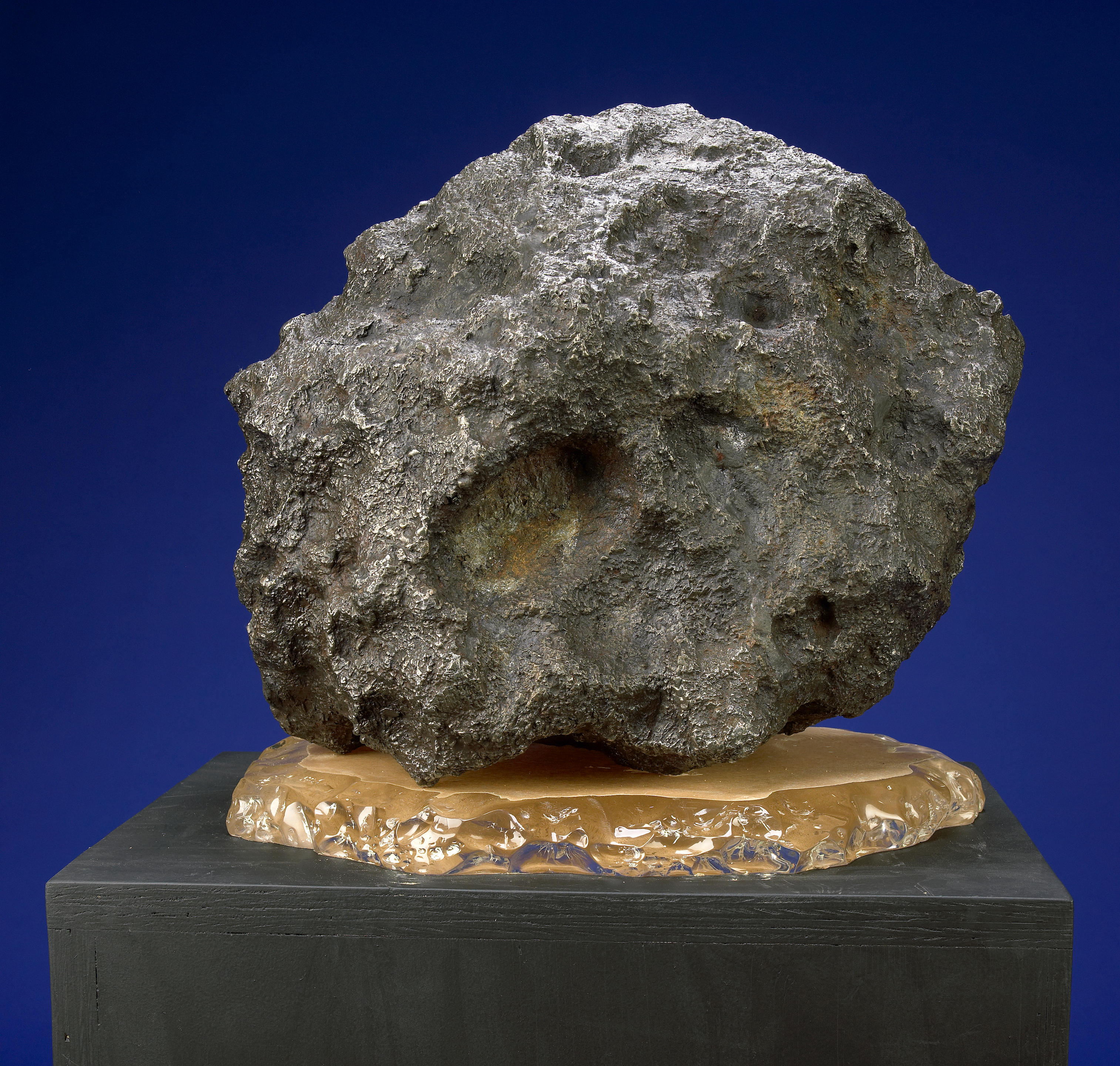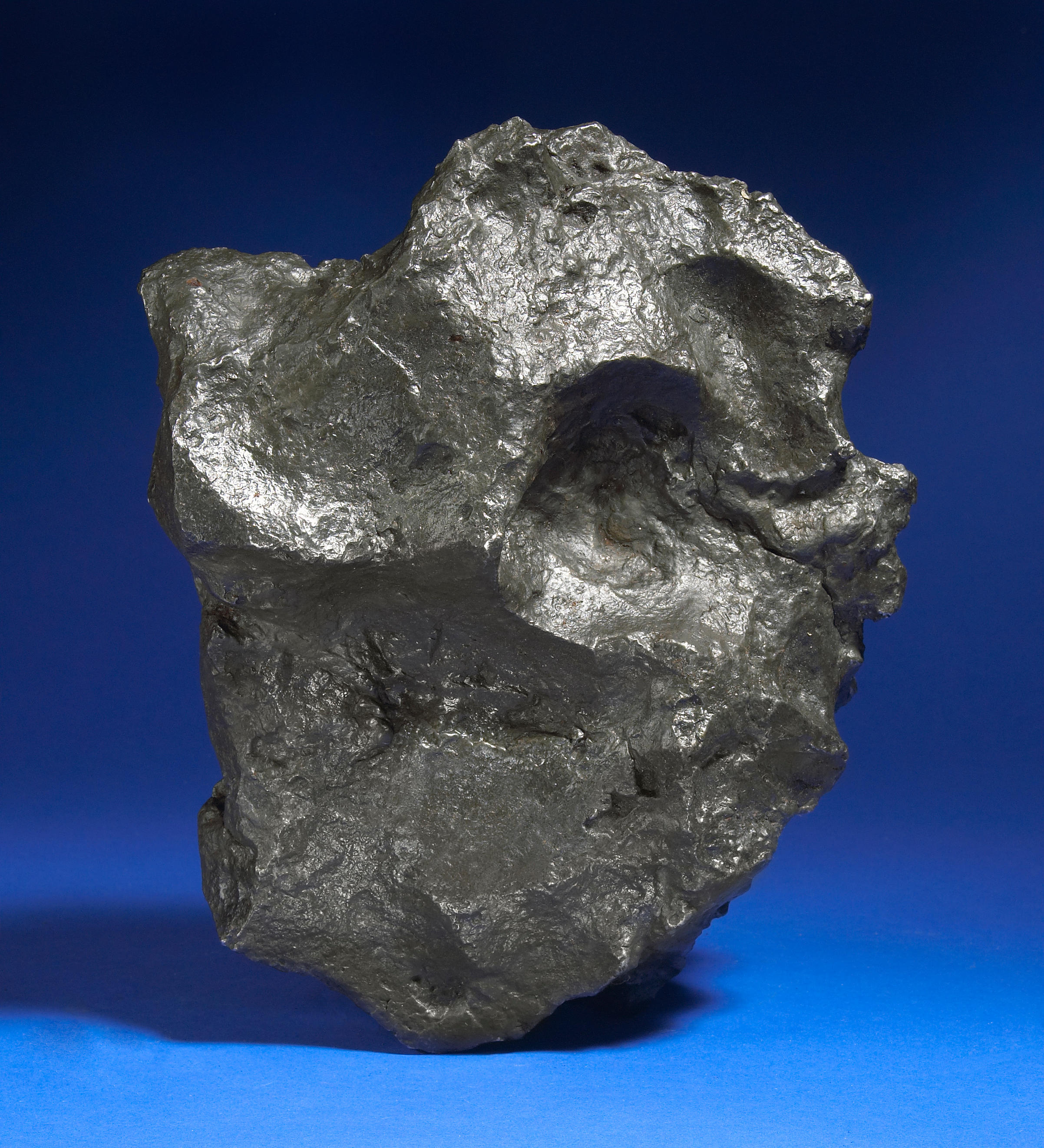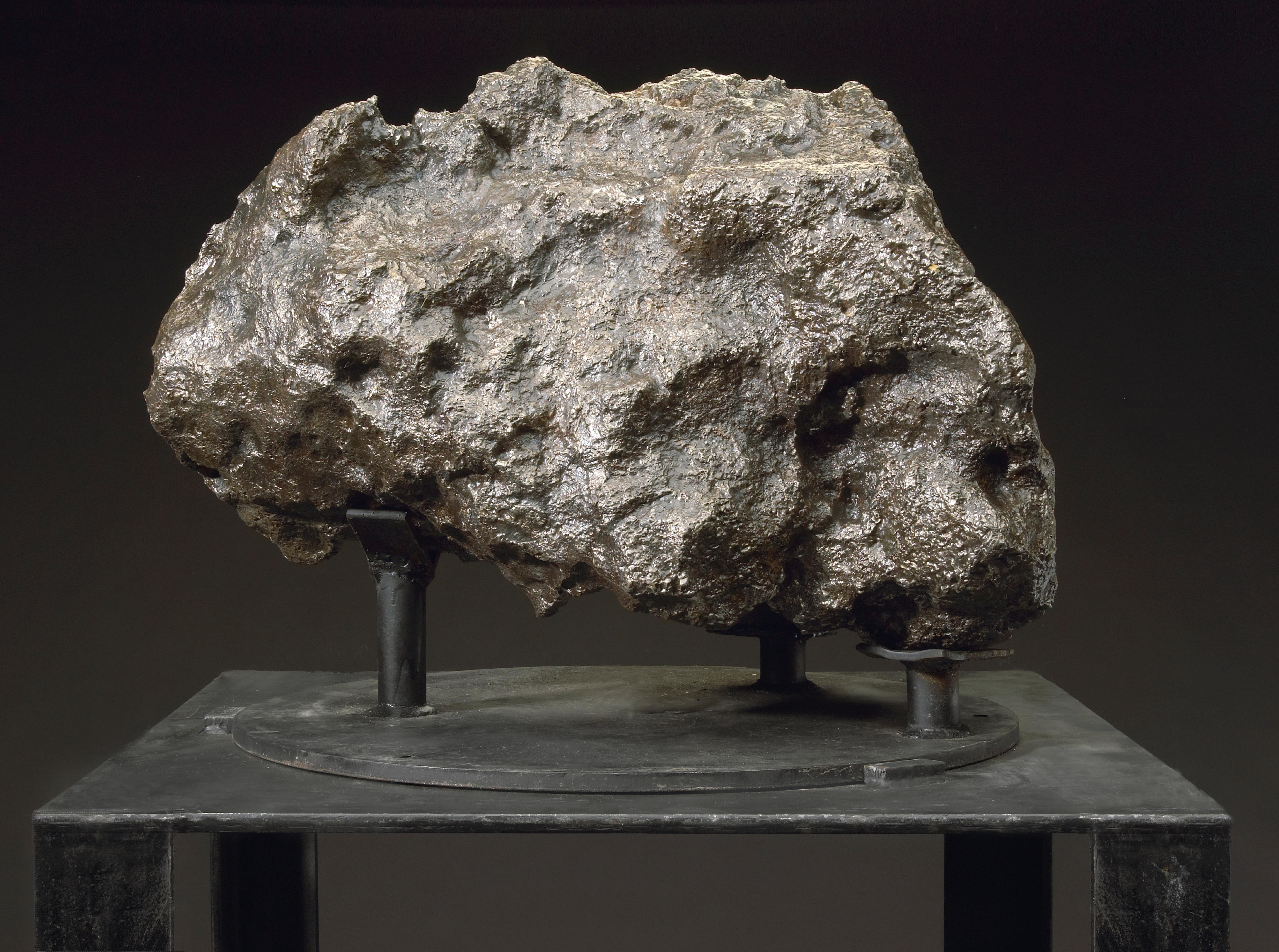Iron, coarse octahedrite Gran Chaco, Argentina In 1576, approximately four thousand years after its collision with Earth, Campo del Cielo (“Valley of the Sky”) meteorites were first written about by Spanish explorers before their unearthly origins were understood. The first large meteorite displayed at the British Museum of Natural History was a “Campo” and several large, highly weathered Campo del Cielo masses can be found today in the finest museums throughout the world. Fortuitously, a previously unknown area of the “Campo” strewn field (an elliptical field in which meteorites fall and are “strewn” across Earth’s surface) was recently discovered. At a higher elevation than the valley where the vast majority of Campos fell, the meteorites recovered from this new area were less susceptible to incursions of ground water and other oxidants and are, as a result, less “weathered.” A few of these “New Campos” are rather extraordinary—and this is one such example. Superior in every way to the older Campo del Cielo meteorites populating the great museum collections, this specimen is completely blanketed in articulated regmaglypts which flair in every direction—evidence that this meteorite tumbled, spun and corkscrewed during its descent to Earth unlike the oriented specimens featured throughout this offering (lots 10, 28, 29, 41). Compelling from any angle, this decorative meteorite embodies every ideal of an iron meteorite – so rarely found in large meteorites, and virtually unheard of in Campos. From different perspectives, this is a dippled abstraction of the male and female forms. This specimen is mounted in a custom-molded base in which the meteorite is balanced and from which it can instantly be lifted. Provenance: Macovich Collection. 481 x 272 x 229mm (19 x 10.5 x 9in) and 74.4 kilos (164 pounds)
Iron, coarse octahedrite Gran Chaco, Argentina In 1576, approximately four thousand years after its collision with Earth, Campo del Cielo (“Valley of the Sky”) meteorites were first written about by Spanish explorers before their unearthly origins were understood. The first large meteorite displayed at the British Museum of Natural History was a “Campo” and several large, highly weathered Campo del Cielo masses can be found today in the finest museums throughout the world. Fortuitously, a previously unknown area of the “Campo” strewn field (an elliptical field in which meteorites fall and are “strewn” across Earth’s surface) was recently discovered. At a higher elevation than the valley where the vast majority of Campos fell, the meteorites recovered from this new area were less susceptible to incursions of ground water and other oxidants and are, as a result, less “weathered.” A few of these “New Campos” are rather extraordinary—and this is one such example. Superior in every way to the older Campo del Cielo meteorites populating the great museum collections, this specimen is completely blanketed in articulated regmaglypts which flair in every direction—evidence that this meteorite tumbled, spun and corkscrewed during its descent to Earth unlike the oriented specimens featured throughout this offering (lots 10, 28, 29, 41). Compelling from any angle, this decorative meteorite embodies every ideal of an iron meteorite – so rarely found in large meteorites, and virtually unheard of in Campos. From different perspectives, this is a dippled abstraction of the male and female forms. This specimen is mounted in a custom-molded base in which the meteorite is balanced and from which it can instantly be lifted. Provenance: Macovich Collection. 481 x 272 x 229mm (19 x 10.5 x 9in) and 74.4 kilos (164 pounds)


.jpg)
.jpg)


.jpg)
.jpg)
.jpg)






Try LotSearch and its premium features for 7 days - without any costs!
Be notified automatically about new items in upcoming auctions.
Create an alert